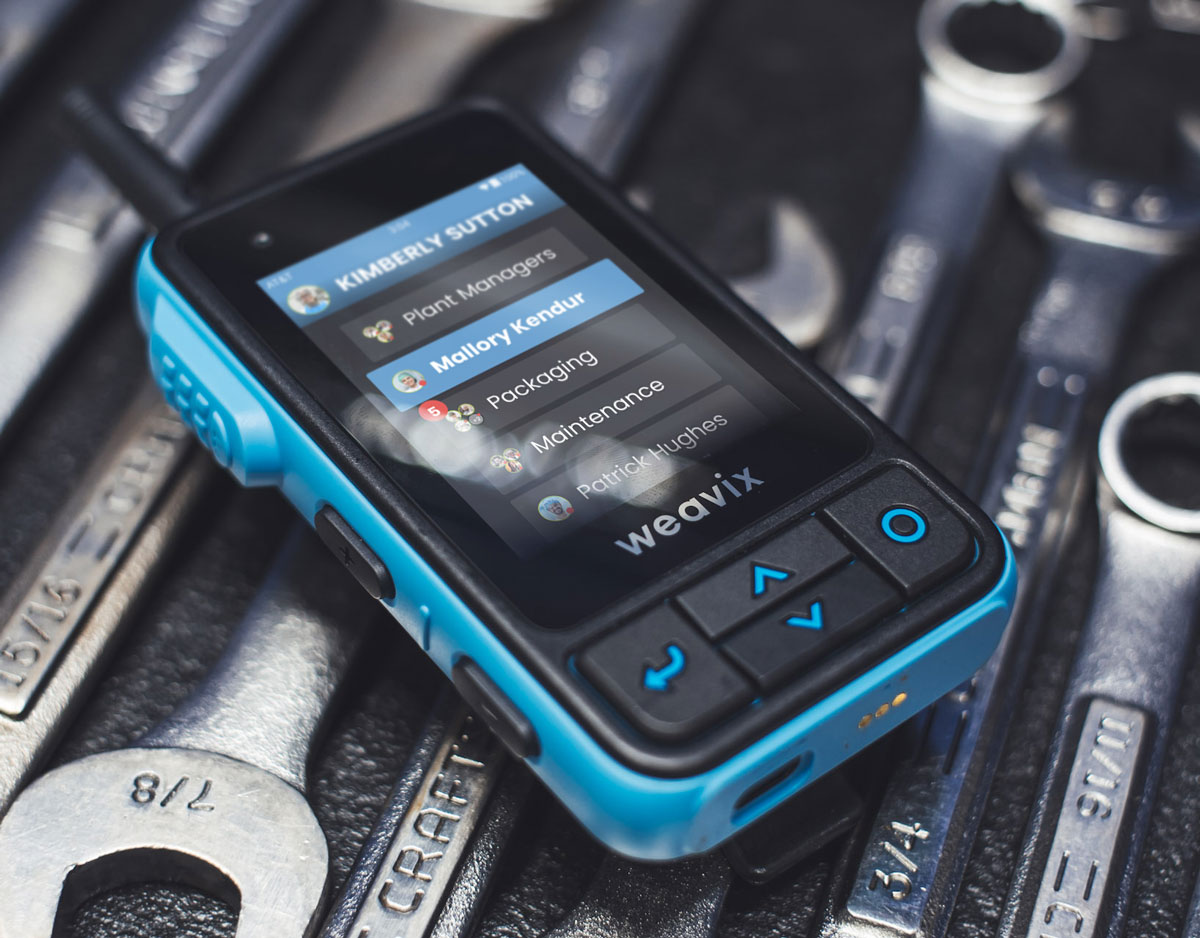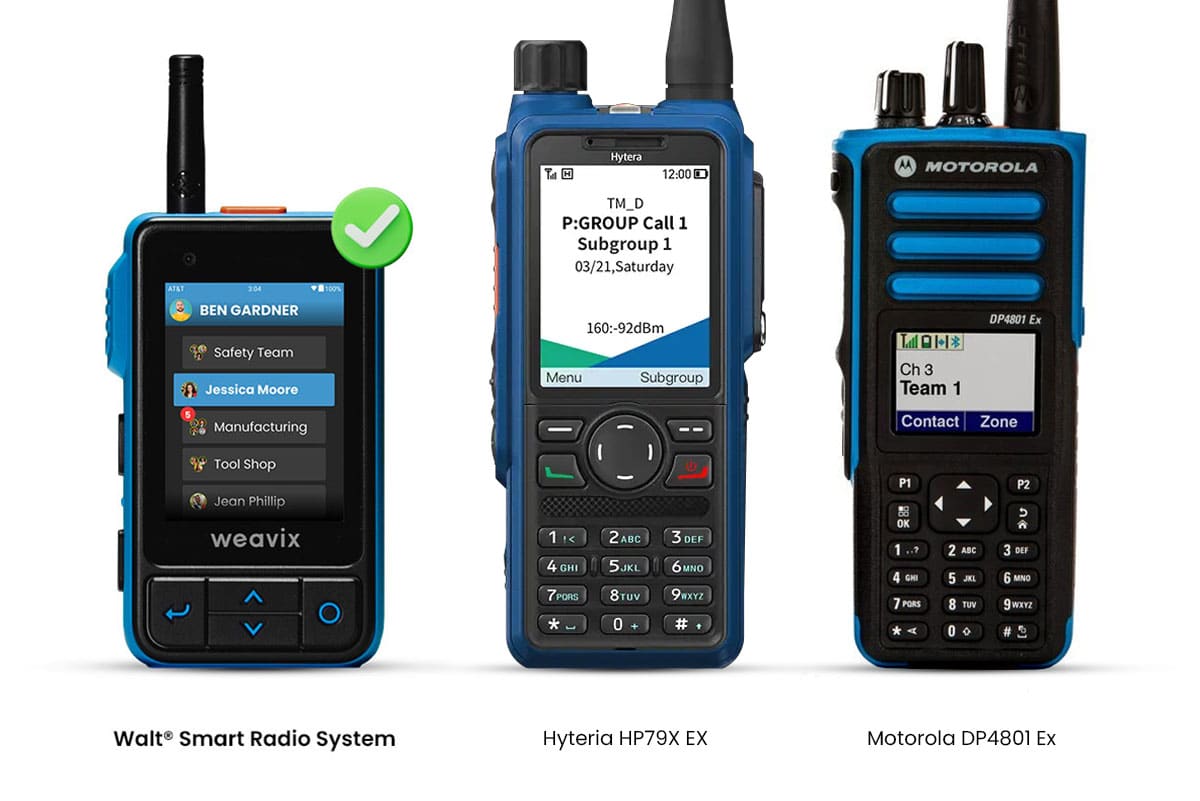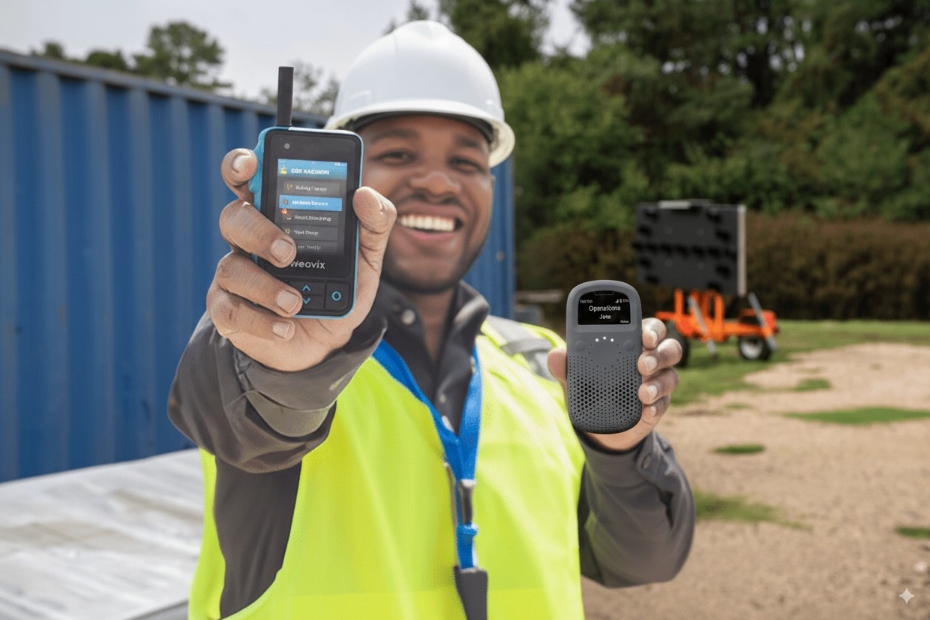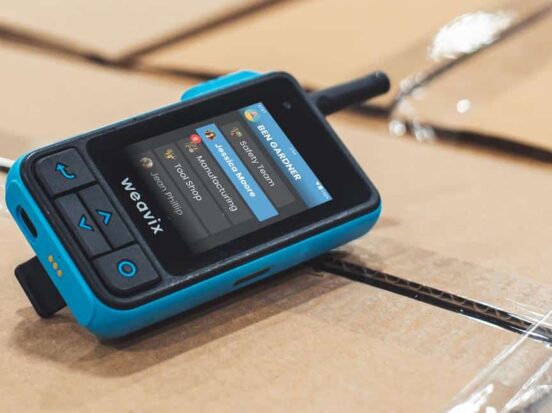The Best Two-Way Radios for Work and Play
We love Wirecutter, but they only review consumer gear. Two-way radios are everywhere, from camping trips to 4.7 million square foot factories. So we decided to have a little fun and make our own version — because when you search for “best radios,” you get a ton of consumer devices that simply aren’t going to cut it in an industrial environment. Here’s what really matters if you’re choosing between consumer radios, business LMR radios, and next-generation smart radios.
TL;DR
Walt is our top pick for two-way radios overall. It works as a rugged push-to-talk replacement but goes further, uncovering the hidden 70% of issues traditional systems ignore. Consumer radios are fine for weekends outdoors, and LMR radios are reliable but outdated for modern needs. RelayX feels like a bad copy that doesn’t cut it. Not all radios are the same, and not all smart radios are either.

Our Pick: Walt Smart Radio (Top Pick Overall)
If you want the best two-way radio today, Walt Smart Radio is it. Walt delivers rugged, shift-long push-to-talk just like a Motorola or Kenwood, but also captures every conversation, transcribes and translates in real time, and preserves tribal knowledge for future shifts.
No other device turns frontline talk into lasting operational intelligence the way Walt does. Companies like Panasonic and Hanes have documented 15–20% less downtime, faster repairs, and better accountability within the first quarter. Walt even has an FRS backup mode if the internet goes down.
Walt is not just a radio replacement — it is a smart platform that pays for itself in 90 days.
Best Consumer Two-Way Radios
Consumer walkie-talkies are fine for camping, skiing, or road trips but not designed for industrial reliability.
- Top Pick: Rocky Talkie Mountain Radio – Rugged, long-lasting battery, excellent range (3 miles in the mountains, 1+ in cities), and USB-C charging. The gold standard for outdoor adventure.
- Budget Pick: Midland T10 X-Talker – Tiny, light, and inexpensive at about $30 for two. Range and durability are limited, but performance is impressive for the price.
- Motorola T600 H2O – Waterproof, floats if dropped in water, fine for lakes and rivers but weak indoors.
- Rapid Radio – Popular on social media for its slick marketing and “no subscription fee” claim, but ultimately more of a toy. It is misleading for serious use since it lacks the durability, range, and reliability of proven brands.
Consumer radios are fine for weekends outdoors. But if you are looking at them as a replacement for business radios, you will quickly find they don’t cut it in factories, warehouses, or logistics environments.
>>>> Learn how the Walt Smart Radio System sets the standard for modern industrial communication.
Best Business Radios (LMR)
LMR radios have long been the traditional choice for business communication — tough enough for construction, utilities, and manufacturing, and proven for shift-long voice coverage. But “traditional” doesn’t mean “best.” These systems come with real drawbacks: FCC licensing headaches, hidden costs, counterfeit parts in the secondary market, and the fact that every conversation disappears once it’s over.
Our Pick: Walt Smart Radio (Best Business Two-Way Radio)
Walt is the best two-way radio for business because it covers everything a traditional LMR does — rugged push-to-talk, all-day battery life, and reliability in loud, hazardous environments — while going far beyond. With transcription, real-time translation, and searchable archives, it eliminates the “he said/she said” blame game and turns frontline talk into operational intelligence.
It even has a thoughtful FRS backup if the internet goes down. Companies like Panasonic and Hanes have proven Walt reduces downtime and speeds up repairs within the first quarter.

Other Notable Options
- Motorola MOTOTRBO R7 – Clear audio in noisy environments, long battery life, and integration with existing Motorola infrastructure. But Reddit users warn about distorted sound quality, expensive accessories, and counterfeit parts on the secondary market.
- Kenwood NX-1300 – Solid durability, multi-protocol support (NXDN, DMR, analog) and long runtime. Affordable upfront, but adding features requires skilled programming.
- Hytera HP6 Series – Lightweight, clear audio, and IP67 ruggedness. Attractive for field crews, but proprietary accessories and licensing inflate costs.
The Bottom Line
Walt is the best choice for companies who want more than just voice. If your goal is accountability, visibility, and measurable ROI, Walt leaves traditional radios behind.
Consumer vs Business (LMR) vs Smart Radios
| Criteria | Consumer Radios (FRS/GMRS) | Business Radios (LMR) | Smart Radios (Walt) |
|---|---|---|---|
| Use Case | Camping, skiing, casual trips | Construction, plants, warehouses (voice only) | Enterprise-wide communication and accountability |
| Range | 1–2 miles real-world | Strong on-site, short-range only, repeaters needed for more | Global via LTE/Wi-Fi/CBRS + FRS backup |
| Licensing | None | FCC license required + renewals | None |
| Costs | Low upfront, no hidden fees | High TCO (repeaters, accessories, licensing, maintenance) | Transparent subscription, proven ROI |
| Features | Basic push-to-talk, weather alerts | Durable audio only, no archive, no accountability | Transcription, translation, multimedia, searchable archive |
| Limitations | Not rugged enough for industry | Conversations disappear, hidden costs, counterfeit parts risk | Captures knowledge, reduces liability, uncovers hidden issues |
Best Smart Radios
Smart radios are designed not just to replace traditional radios, but to transform frontline communication into operational intelligence.

RelayX vs Walt Smart Radio (At a Glance)
| Feature/Capability | Walt Smart Radio(FRS/GMRS) | RelayX |
|---|---|---|
| Automatic transcription & archive | Yes – every conversation is searchable and reusable | No – conversations disappear |
| Real-time translation | Yes – unlimited, with archived transcripts | Yes – delayed playback, extra fee, no archive |
| Reliability | Works in harsh environments (freezers, chemicals, food processing) + FRS backup if internet is down | Failed in freezer test, no offline backup |
| Knowledge capture | Creates reusable SOPs, improves onboarding, preserves tribal knowledge | None |
| ROI impact | Documented reductions in downtime, MTTR, and rework | Not measurable |
See the full Walt vs. RelayX feature comparison here
At Panasonic Energy, Walt reduced downtime within the first quarter. At Hanes and Howard Industries, leaders saw faster shift handoffs, fewer reworks, and better multilingual training. RelayX and LMR radios can’t deliver this kind of ROI.
FAQs
Do smart radios replace LMR?
Yes. If all you need is basic voice on a jobsite, LMR might do, but at a cost. Half of smart radio buyers start out thinking they just need a replacement, then realize transcription and accountability are transformational. The other half already come in knowing they need better productivity, reduced liability, and less downtime. Either way, smart radios go far beyond LMR by turning conversations into lasting operational intelligence.
Is RelayX a good alternative to Walt Smart Radio?
No, Walt is in a different league. RelayX looks rugged but misses the essentials: transcription, archives, and accountability. Translation is clunky and costs extra, conversations disappear, and the devices have failed in real-world use cases like freezers and food processing plants.
Why would anyone stick with traditional radios?
If your company isn’t investing in digital transformation, doesn’t value accountability, and is fine with “he said/she said” disputes, traditional LMR is the safe but limited choice.
What makes Walt Smart Radios unique?
Walt is the only system that captures, transcribes, and timestamps every frontline exchange. That means fewer reworks, faster onboarding, less downtime, and stronger compliance. It’s not just communication — it’s operational intelligence. It also includes weCare for free radio replacements.


